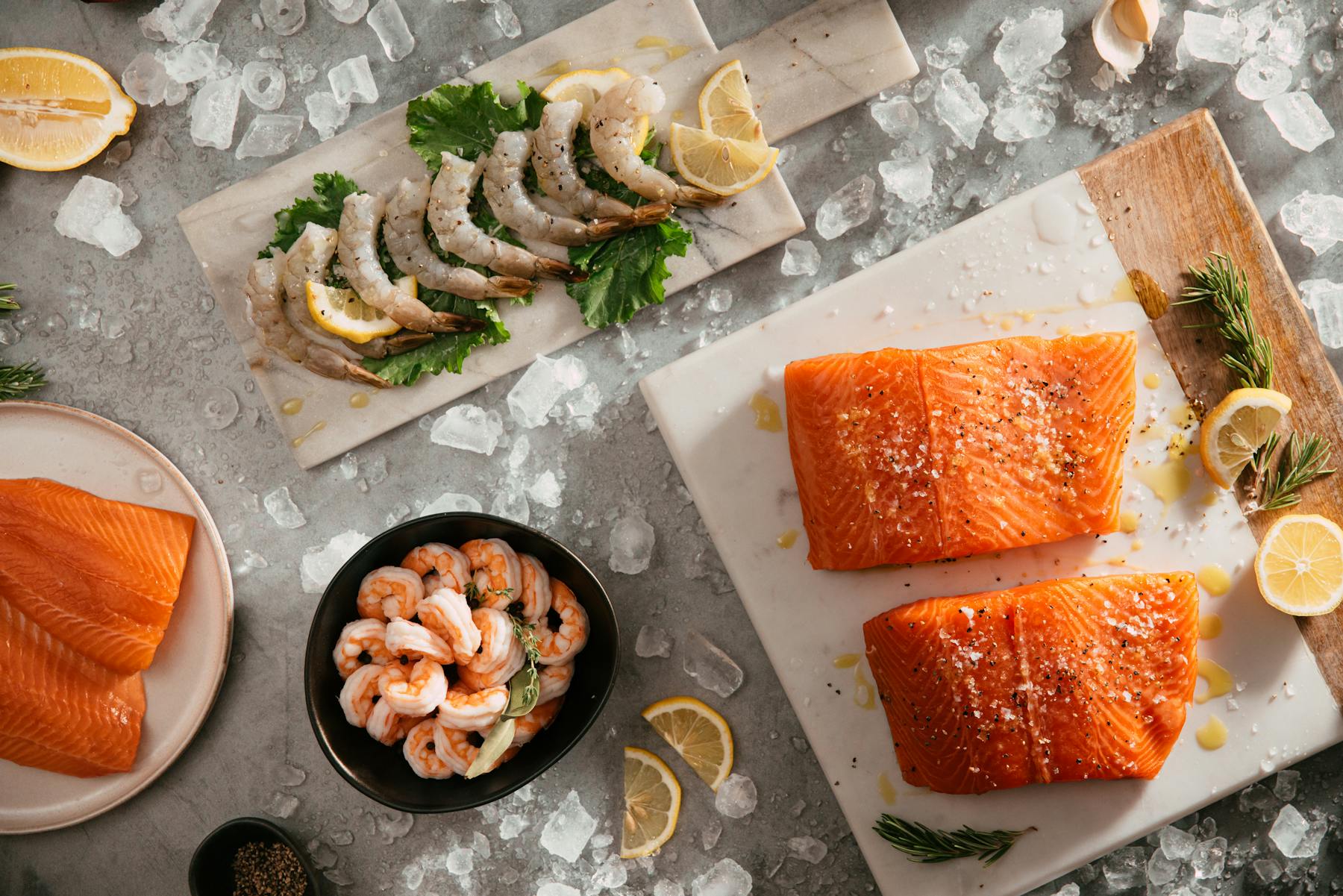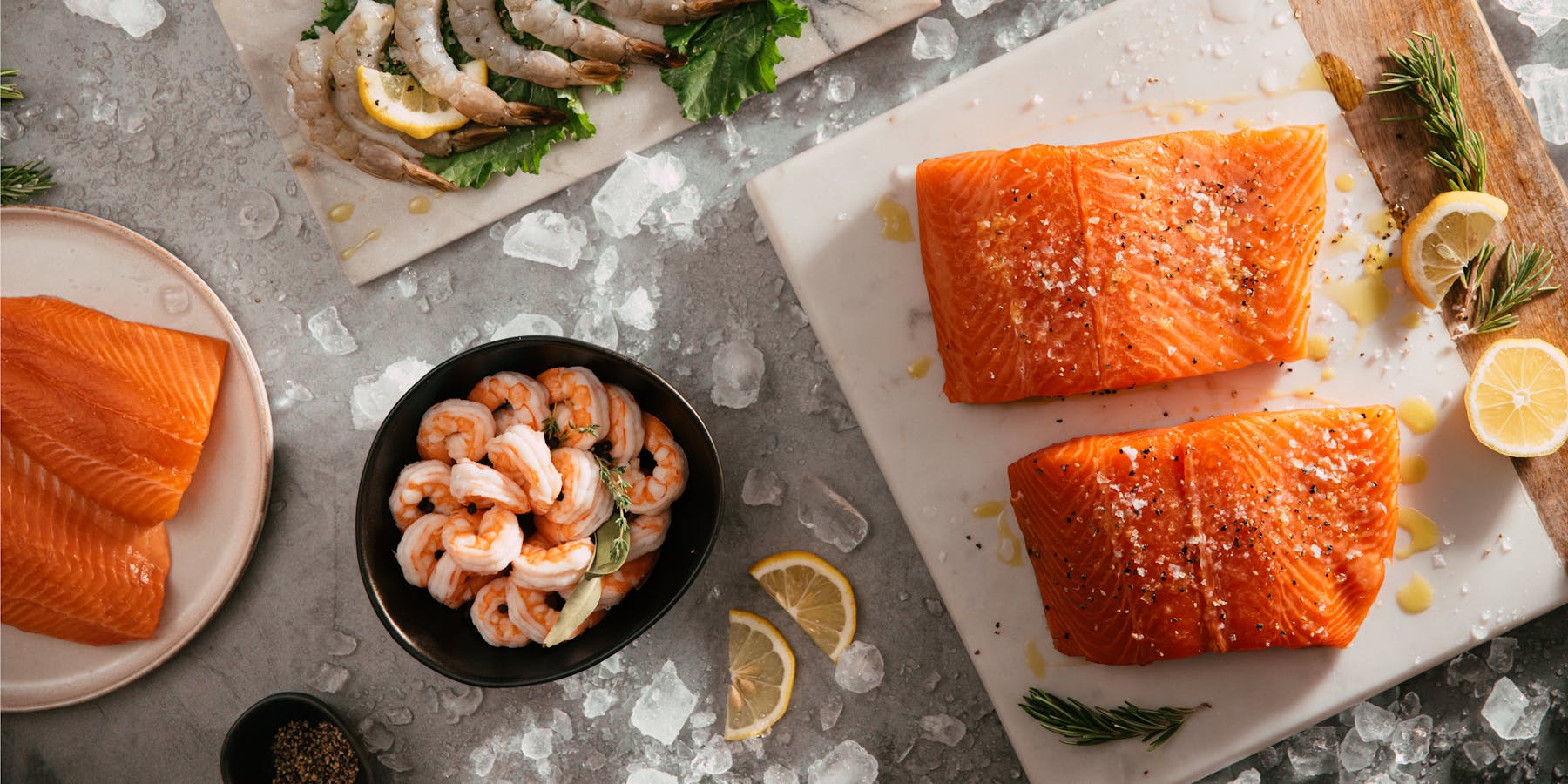

Sustainably harvested, wild caught and responsibly raised from independent fisheries.

Wild Caught Seafood
Direct from boats to your door, our seafood, like panga-fished Mexican blue shrimp and Wild Alaskan Copper River sockeye salmon, is traceable and frozen at peak freshness. Enjoy savory, robust flavors—leaner than farm-raised options.

Sustainable Seafood
Balanced in flavor with higher fat content, sustainable seafood supports ocean health and global demand. Certified by third-party standards like ASC, BAP, GlobalGAP, and Fair Trade for responsible aquaculture practices.

How to Grill Lobster Tail
- Cut each tail down the back to the fins with sharp kitchen sheers
- Use your thumbs to separate the top and bottom of the shell from the meat
- With meat placed on top of the shell, place tails on the grill
- Cook for 1-2 minutes per oz at 400 ℉ or until internal temperature reaches 145℉
- Baste with garlic and herb butter & enjoy!
Seafood Recipes & Cooking Tips
Seafood Cooking Guides
Seafood is an excellent source of protein, vitamins, and minerals, and it's also low in fat and calories. The average seafood serving has only about 150 calories and less than 10 grams of fat. Seafood can be prepared in a variety of ways including baking, grilling, barbecuing, frying, and boiling. Popular seafood recipes include Lobster Rolls, Grilled Salmon, and Fish Tacos.
| Seafood Cut | Method | Temp | Avg Time | Finish Temp |
|---|---|---|---|---|
| Fish Fillet | Sear | Med-High | 3-5 mins | 145 °F |
| Shrimp | Sear | Med-High | 3-4 mins | 120-140 °F |
| Crab Legs | Oven | 350 °F | 5-9 mins | 145 °F |
| Lobster | Grill | 425 °F | 9-10 mins | 140 °F |
Note:The above guidelines are only guard rails. Average time depends on size/amount of fish/shellfish. Stoves and pans vary in performance as well; so to achieve perfectly cooked seafood, always check color and texture regularly.
FAQ

















